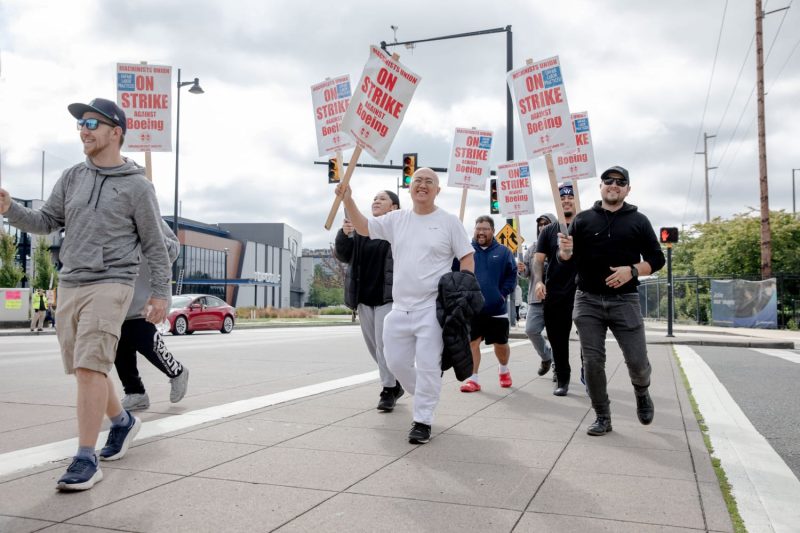
Boeing Factory Strike Hits 1-Month Milestone with New CEO Feeling the Heat
The Boeing Factory Strike: A Standoff of Resolve and Resistance
The Boeing factory strike entered a critical phase as it recently crossed the crucial one-month mark. The prolonged stand-off between the company’s management and the striking workers is not just about wages and benefits; it represents a deeper conflict over power dynamics and worker dignity. As pressure mounts on the new CEO to resolve the impasse, both sides are digging in their heels, preparing for a protracted battle that could have far-reaching implications for the aviation industry and the future of labor relations.
From the outset, the workers’ demands have been clear and unyielding: fair wages, improved working conditions, and job security. However, the response from Boeing’s management has been lukewarm at best, as they have attempted to downplay the severity of the situation and minimize the impact of the strike on their operations. The standoff has escalated in recent weeks, with both sides refusing to budge from their respective positions, leading to a stalemate that shows no signs of abating.
At the heart of the conflict lies a fundamental question of power and control. The workers are demanding a seat at the table, insisting that their voices be heard and their concerns addressed. They are tired of being treated as mere cogs in the corporate machine, expendable and replaceable at the whims of the management. For them, the strike is not just about wages; it is about dignity, respect, and the right to have a say in the conditions of their own labor.
On the other hand, Boeing’s management is facing pressure from investors and shareholders to cut costs and maximize profits. The new CEO, tasked with leading the company through this turbulent period, is caught in a difficult position, torn between the demands of the workers and the expectations of the boardroom. How he navigates this delicate balance will not only determine the outcome of the strike but also shape his legacy as a leader.
As the strike drags on, the stakes continue to rise. The longer the factory remains idle, the more disruptive it becomes to Boeing’s production schedule and financial bottom line. Suppliers are feeling the squeeze, and customers are growing impatient. The aviation industry, already reeling from the effects of the pandemic, can ill afford such disruptions at this critical juncture.
In the midst of this standoff, solidarity among the workers remains strong. They have shown remarkable resilience and determination, standing firm in the face of mounting pressure and uncertainty. Community support has also been instrumental, with local organizations and unions rallying behind the strikers, providing them with the resources and moral support they need to carry on.
As the Boeing factory strike enters its second month, the outcome hangs in the balance. Will the new CEO heed the calls for dialogue and compromise, or will he continue to take a hardline stance against the striking workers? The resolution of this conflict will not only impact the lives of those directly involved but will also send a powerful message about the future of work and the rights of labor in an increasingly volatile and uncertain world.
